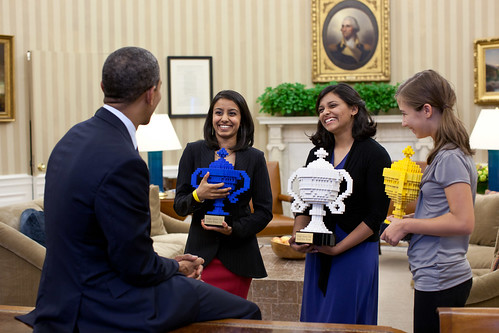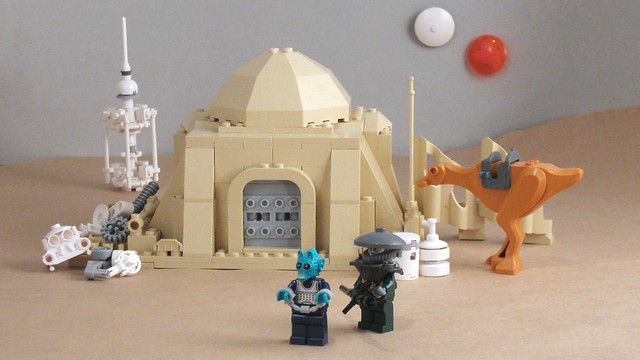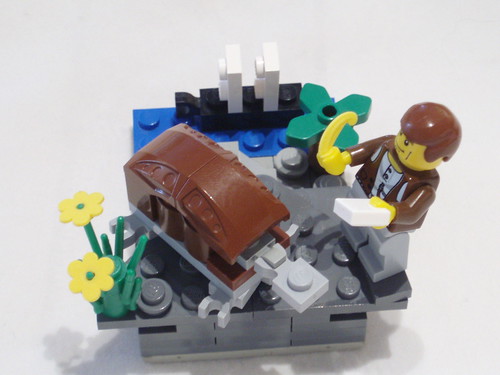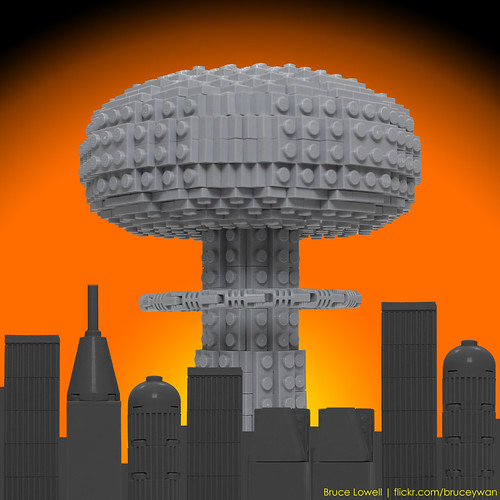
Sunday, January 29, 2012
Friday, January 27, 2012
Figs in space
Canadian high school students Mathew Ho and Asad Muhammad had an idea. They'd seen that some MIT students had sent a balloon into space, and they wanted to try it themselves. The purchased a balloon, and created a payload that involved cameras, a video camera, and a smart phone with GPS tracking. They sent this up about 80,000 feet about the earth's surface, and were able to take amazing photos. What's more, they were able to retrieve the payload and get this data. The reason it's hitting this blog is that they had a passenger. Watch the video to see an accelerated view of a minifig going where no fig has gone before (well, there are actually some LEGO pieces on the International Space Station, and images of figs were on a Mars probe).


Friday, January 20, 2012
Google Science Fair
Google is once again sponsoring an international science fair. If you're a teenager, check it out. The sponsors are Google, CERN, National Geographic, Scientific American, and ... LEGO!

Here are last year's winners Lauren Hodge, Shree Bose, and Naomi Shah as the guests of President Obama. Note the cool LEGO trophies!

Here are last year's winners Lauren Hodge, Shree Bose, and Naomi Shah as the guests of President Obama. Note the cool LEGO trophies!

Sunday, January 15, 2012
Anatomy
Nannan Zhang is in med school, and he made this tribute to his Anatomy professors, the UTSW Anatomists.


Saturday, January 14, 2012
Friday, January 13, 2012
... in a galaxy not so far, far away ...
Astronomers using the Kepler space telescope have found a third real-lifeTatooine (here in LEGO by Larry Lars). No, they haven't seen Jawas running around. Instead they've found another planet circling a binary star. Though this was a gas giant, it was very near the habitable zone of the binary system. Scientists estimate there might be several million of these in the Milky Way, suggesting that there might be somewhere within a few hundred light years you could go out and watch the double sunset.


Thursday, January 12, 2012
Saturn V
Check out this amazing detailed and massive Saturn V by LEGO Professional Ryan McNaught. This is surely the MOC by which we will judge all future NASA MOCs. You can read some details in this article. BTW, if you're down under, get yourself to Melbourne next week for the Brickvention gathering, where you'll be able to see this in person.

Oh, can I say it again, this is massive. 5.6 meters tall, to be precise. That makes it, I believe, true to minifig scale. See here with Ryan for scale:


Oh, can I say it again, this is massive. 5.6 meters tall, to be precise. That makes it, I believe, true to minifig scale. See here with Ryan for scale:

Tuesday, January 10, 2012
Galapagos Tortoise
The Galapagos tortoise played a role in Darwin's development of the theory of evolution. He realized that the tortoises on different islands had developed differently in response to their environment, writing "animals on separate islands ought to become different if kept long enough apart with slightly differing circumstances. – Now Galapagos Tortoises, Mocking birds, Falkland Fox, Chiloe fox, – Inglish and Irish Hare."
The news reported yesterday that a species of Galapagos tortoise previously thought to be extinct is still alive. Biologists found genetic markers unique to that species in living tortoises that appear to be cross-breeds.
Here Kaptain Kobold depicts Darwin observing a tortoise.

The news reported yesterday that a species of Galapagos tortoise previously thought to be extinct is still alive. Biologists found genetic markers unique to that species in living tortoises that appear to be cross-breeds.
Here Kaptain Kobold depicts Darwin observing a tortoise.

Sunday, January 1, 2012
Boom
We all recognize a mushroom cloud (here in LEGO by Brucey-Wan) as the result of an atomic explosion. A radioactive element is one that is unstable due to the ratio of protons and neutrons in the nucleus. These atoms fall apart, often emitting small subatomic particles. If you have a high enough concentration of unstable atoms (i.e. critical mass), these subatomic particles can ram into other radioactive nuclei, causing them to break apart just like hitting the cue ball into a rack of balls at the start of a game of pool. This breakdown (fission) leads to more subatomic particles being spit out, which run into more nuclei, and again and again and again, a chain reaction. At each fission event a small amount of energy is given off, but as the chain reaction proceeds, a huge number of atoms break down in a very small time, and the huge amount of energy given off is the atomic explosion. This energy superheats the air, which expands with explosive force as the blast. At the center of the blast, this hot expanding air rises straight up, and this creates a wind coming in and up that pulls up dust and debris from the ground. When this reaches a high enough elevation, hitting much cooler air, the cloud stops rising and mushrooms outward. This cloud also contains radioactive elements blown apart in the initial atomic blast, and this dust settling back to earth is the radioactive fallout.


Subscribe to:
Comments (Atom)
